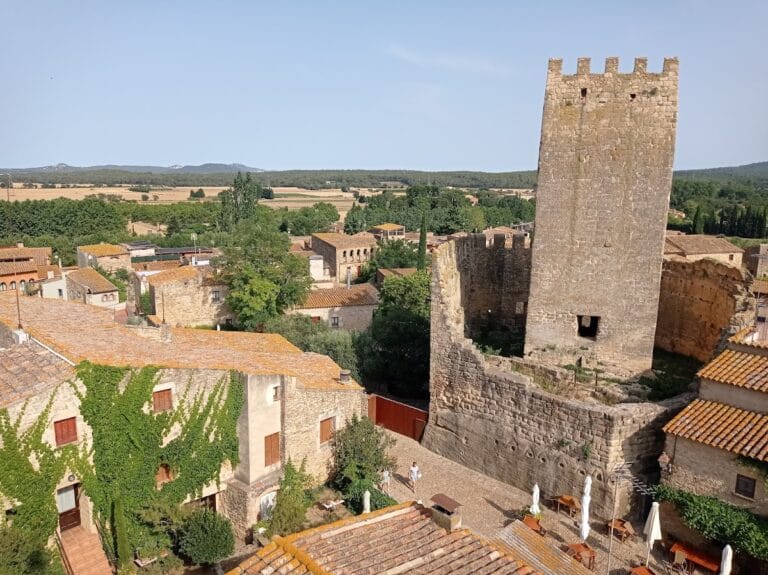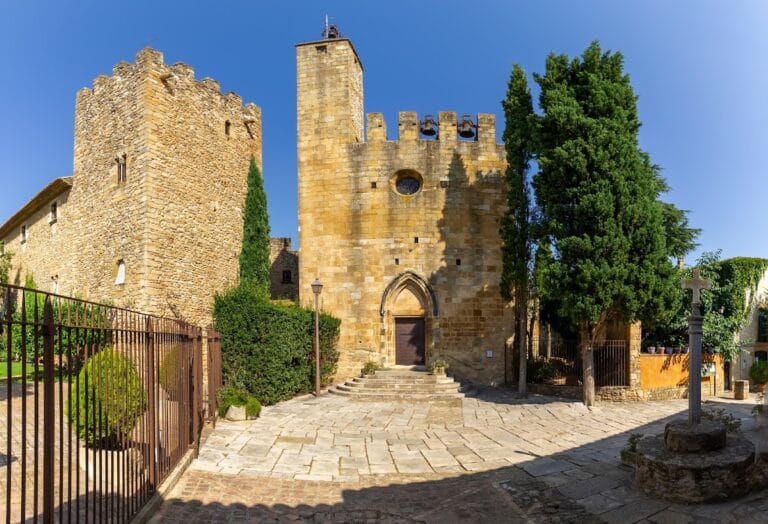Castell de Pals: A Medieval Fortress in Spain
Visitor Information
Google Rating: 4.6
Popularity: Very Low
Google Maps: View on Google Maps
Official Website: visitpals.com
Country: Spain
Civilization: Unclassified
Remains: Military
History
The Castell de Pals is a fortress situated in the town of Pals, Spain, originally built by medieval Christian settlers during the early Middle Ages. Its earliest known documentation dates back to the late 9th century when it was referenced in a royal decree by King Odó of the Carolingian Empire, who called the site “castell de Mont Aspre.” At this time, the castle was connected to the nearby Monastery of Sant Pau de Fontclara, reflecting its early religious and strategic importance.
In the closing years of the 10th century, the castle and the adjacent church of Sant Pere were donated by Ramon Borrell and Ermessenda, counts of Barcelona and Girona, to the bishopric of Girona. Throughout the 11th and 12th centuries, ownership of the castle transferred between various local noble families and feudal lords, including notably the Quíxol family and Bernat Gausfred, a pattern typical of medieval territorial control. Eventually, the counts of Barcelona consolidated their possession of the fortress during this period.
The 13th century saw the lordship of Pals pass to Bernat de Santaeugènia and, through marriage, to Viscount Guerau VI de Cabrera. In 1311, King Jaume II formally brought the castle into the Crown’s holdings. Shortly after, in 1321, the bishop and cathedral chapter of Girona purchased the castle, marking a brief return to ecclesiastical control. At one point in the early 14th century, Queen Elisenda de Montcada received the castle as a life grant, further illustrating the fortress’s political significance.
King Pere III reaffirmed the castle as royal property in 1338. However, the 15th century brought military conflict during the civil war against King Joan II. The castle suffered substantial damage during this period of unrest. By 1478, the monarch authorized the dismantling of much of the fortress to reuse its stones in rebuilding the town’s defensive walls and the church of Sant Pere. Only the main tower was preserved, which later came to be known as the Torre de les Hores. Archaeological investigations have also revealed burial sites from the Visigothic period beneath the tower’s natural rock foundation, indicating earlier human activity at the location.
Remains
The surviving remains of Castell de Pals center predominantly on its master tower, the Torre de les Hores, a circular structure dating back to the 12th century. This tower stands about 15 meters tall with nearly 2-meter-thick walls built from medium-sized, roughly shaped stone blocks. Set upon a natural rock outcrop, the tower’s sturdy construction reflects its defensive purpose. Inside, the tower comprises two levels: the lower level is capped with a false dome featuring a central opening used for moving between floors, while the upper level is covered by a vaulted ceiling. The original access point into the tower lies on the upper floor, approximately seven meters above the ground, facing east. This entrance is marked by a semicircular arch made of ten wedge-shaped stones known as voussoirs. Adjacent holes on either side of the lintel suggest that a removable wooden platform, accessed by ladder or rope, once allowed entry.
Above the main tower, a small bell tower was added during the 15th century. This addition contained a clock, from which the tower derives its modern name, Torre de les Hores, meaning “Tower of the Hours.” Beyond the tower itself, fragments of the original castle’s defensive walls have been preserved, incorporated into the foundations and lower sections of houses along the southern end of the street called Torre. Archaeologists also identified a vaulted chamber with a barrel-shaped stone ceiling in a nearby house west of the tower, a remainder of the castle’s original internal structures.
Most of the castle was dismantled in the late 15th century after its military decline. Only a few elements survive today aside from the tower and residual wall sections, including two arched bridges known from historical records. These tangible remnants provide insight into the castle’s evolution from a medieval stronghold to a source of building material for the surrounding community. The uncovered Visigothic tombs located beneath the rock foundation of the tower further testify to the site’s long-standing human presence before the castle’s construction.







